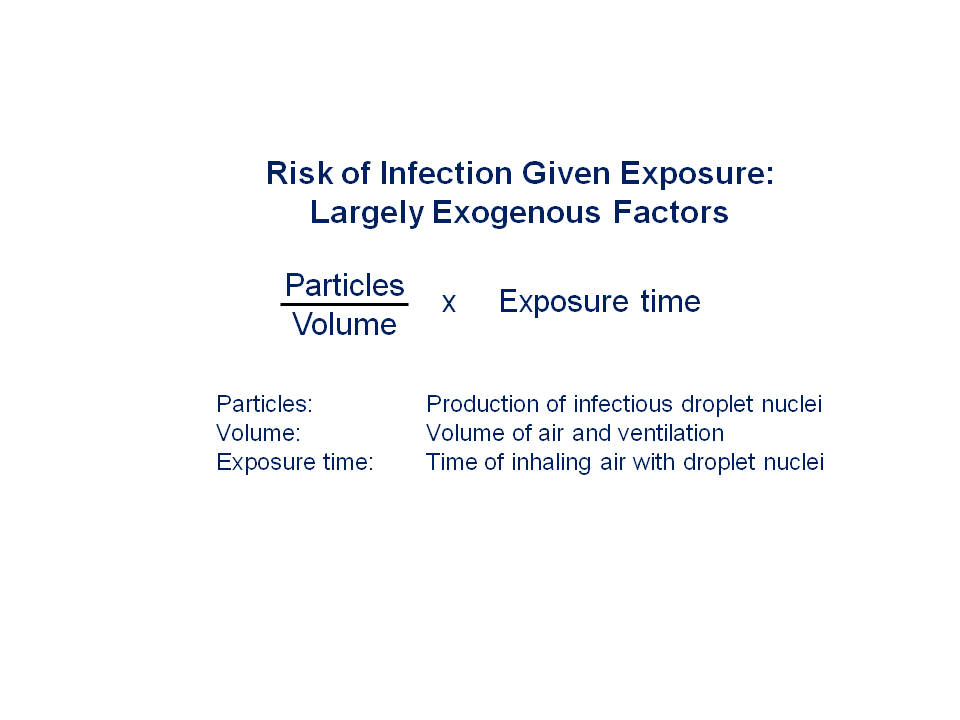 |
|
| |
|
|
| Slide |
009 |
Epidemiologic Basis of Tuberculosis Control |
 |
Next |
 |
 |
Previous |
 |
First |
 |
Last |
The risk of becoming infected given exposure is largely determined by exogenous factors. It depends on the number of infectious particles and in which volume of air they are contained, thus on the concentration of tubercle bacilli in the air that a susceptible individuals inhales. The probability that such an infectious particle is actually inhaled, will depend on the period of time, the exposure time, this air is being inhaled.
There must be a source that produces infectious particles. By and large, the transmission of M. tuberculosis complex is airborne. There are a few exceptions, most notably M. bovis, but this will concern us only marginally in this course, because most cases of tuberculosis are due to M. tuberculosis within the complex. We will be discussing the properties of infectious droplet nuclei and what mechanisms produce them.
The environment is important, in particular the volume of air into which tubercle bacilli are expelled. It will thus be necessary to discuss how ventilation and removal of bacilli affect the concentration of bacilli in the air.
The period or length of exposure to air containing tubercle bacilli will further affect the probability that a susceptible person becomes actually infected with tubercle bacilli. |
| |
|
Go to top
Last update:
September 10, 2010